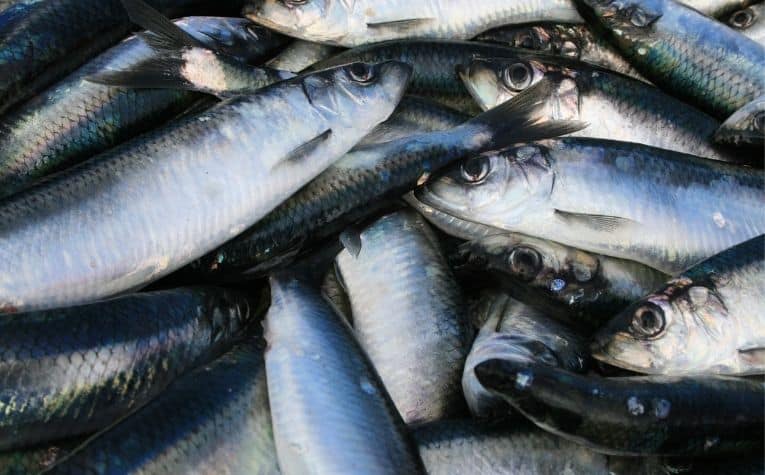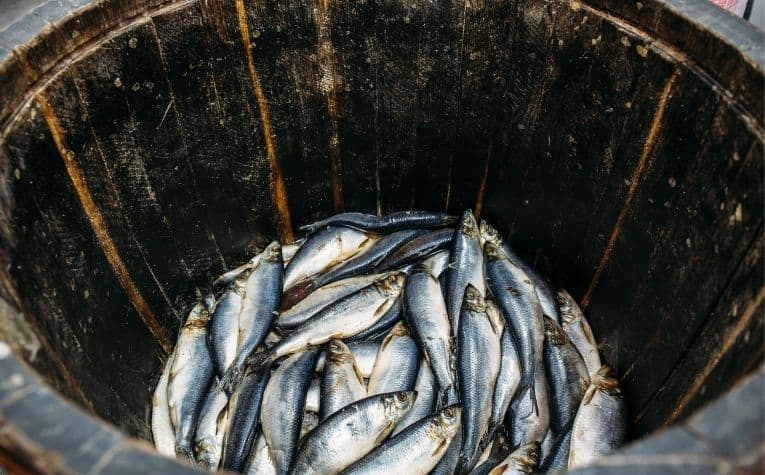Surströmming is a Swedish food that has a long history in the country. It is known to many people worldwide because of its unique, pungent, and – some would say – a repulsive smell that is a result of its fermentation, which could last up to six months. But do Swedes actually like surströmming?
Most Swedes actually do not like surströmming, despite its unique association with their country.
Many residents of Sweden have never had surströmming and don’t know how to prepare it. According to one report, surströmming is one of the most hated foods in Sweden. [1]
This article explores more about surströmming, including its history, how it’s prepared, and other interesting facts.
Keep reading to learn about this unique Swedish food.
Sweden and Denmark are Scandinavian neighbors. See Do Danes and Swedes Hate Each Other? to learn more.

What Is Surströmming?
Surströmming refers to one of the infamous delicacies in Sweden, which is produced by fermenting herring from the Baltic Sea.
The spawning fish is caught in Spring in the region between Finland and Sweden, and their heads are removed. Then, their bodies are stored in salted water solution.
The fish remain partially preserved in barrels for about two months before they are transferred to airtight tins.
They are stored in these tins for six months to one year, in which they continue to ferment.
The word Surs – which translates to a combination of “sour” and “strömming” – refers to Baltic herring. Therefore, “surströmming” means sour Baltic herring or fermented Baltic herring.
History of Surströmming
There are different accounts of the origin of surströmming and how it was adopted in Sweden. [2]
One narrative links it to Finland, following a group of Swedish sailors who sold rotten herring at the Finish port.
At the time, the sailors did not have enough salt to preserve the fish. When they returned, the locals wanted more of the partly rotten herring.
The sailors tried the fish for themselves and began what would later turn into an interesting culinary dish in Sweden.
Another account argues that the shortage of salt following King Gustav Vasa’s rebellion may have prompted the Swedes to be creative in the art of food preservation.
The two accounts put the origin of surströmming to somewhere around the 15th century.
Also see Why Do Doors Open Outwards In Sweden?

Preparing Surströmming
Baltic herring are caught before they spawn between May and early July. The fat content of Baltic herring at this time is relatively low.
They are preserved by salting for about 1-2 days in a strong salt solution. It is continuously stirred for the first four hours.
The herring are beheaded after pre-salting and then gutted. They’re put in barrels with a weak brine of about 17% salt.
The barrels are sealed and occasionally rotated in the first three days and finally stored. They are stored at temperatures of between 15°C and 18°C (59°F and 64°F) for the next three to four weeks.
The fish ferment in the barrels as gases escape from between the staves. Finally, the fish and brine are transferred to cans. The cans do not allow gases to escape, and they bulge out because of pressure.
How Does Surströmming Smell?
The defining quality of surströmming and its source of international notoriety is its unique smell.
According to the Japanese study, surströmming’s smell was one of the most putrid cocktails in the world. [3]
The smell of surströmming was found to be stronger than the Japanese natto (i.e. soybeans fermented with intestinal bacteria) and Korean Hongeo-hoe (i.e. fermented skate fish).
It was also found to produce the most pungent smell of any canned cheese. [4]
The foul odor from surströmming is a result of autolysis in the process of fermentation. [5]
The bacteria and enzymes create different acids, such as butyric acid, propionic acid, and acetic acid.
However, the smell’s leading cause is the hydrogen sulfide that’s typically associated with the repulsive smell of rotten eggs.
Due to the strong smell, surströmming is always opened outdoors, and most people prefer eating it outside. When the can of surströmming is opened, it releases a powerful and often overwhelming odor.
Scandinavian languages have similarities and differences. See Are Swedish and Dutch Similar? to learn more.
How Does Surstromming Taste?
According to surströmming enthusiasts, the taste is not as bad as the smell and tastes much better.
Salt is used to preserve fish and prevents them from rotting.
However, when it starts to ferment the process takes at least six months. The duration of the process is partly what gives the fish their strong smell and acidic taste.
Some recommend that surströmming never be eaten plain and needs accompaniments like bread, onions, and potatoes or other toppings, for a better taste.
Surströmming has a sharp tangy taste, similar to the taste of blue cheese, but with a fishy flavor.
Traditionally, ripe surströmming was eaten with thin, hard bread and boiled potatoes, the almond-shaped variety that’s common in the north part of Sweden.
Surströmming has a sharp, cutting taste and is occasionally taken with milk. Beer and aquavit are also some of the popular accompaniments of the dish.
Those who are used to the smell are able to take it happily without thinking of the odor.
When to Eat Surströmming
There is a special surströmming festival at the end of August in the northern part of Sweden.
The Swedes enjoy surströmmingsskiva, a surströmming party, which gives anyone interested in the opportunity to taste surströmming.
For travelers, there is a museum in Sweden with a permanent exhibition where tourists are welcomed to learn about surströmming. [6] The museum is located away from human habitation, in a gulf between Finland and Sweden.
Visitors can learn how to prepare and serve surströmming from the museum. Additionally, the museum has a sniffing box that allows visitors to smell the odor of the surströmming.
Many airlines have banned surströmming because they are pressurized and could explode on board. However, the surströmming fans have disputed these claims. [7]
Is It Safe to Eat Surströmming?
Although the smell can make one sick, surströmming is safe to eat. The smell is not a result of rotten fish, but rather the fermentation of the fish.
There are numerous benefits associated with fermented foods and mainly fermented fish.
The lactic acid-producing bacteria and microbes responsible for the fermentation have health benefits.
Nutritionists advocate eating fermented foods for overall health.
Due to the fermentation of surströmming, the microbial flora is controlled by lactobacillus, and it’s believed the origin could be the barrels. [8]
When the barrels are sterilized, the surströmming does not develop its strong flavor.
The National Food Agency of Sweden carried out a trial by adding food pathogens like Bacillus cereus, Clostridium perfringens, and Staphylococcus aureus to surströmming, and none of them could grow.
This is an indication that there is an efficient barrier that stops the growth of unwanted bacteria in surströmming.
It is also believed that the salt content could be responsible for inhibiting the growth of these pathogens.
Experiments with lactobacillus show that they establish a safe and stable environment that inhibits spoilage flora and pathogens’ growth.
They are also responsible for lipid stability that seems to inhibit the development of rancidity. This would otherwise be the leading cause of the rapid quality deterioration of fatty fish products.
Therefore, surströmming is safe to eat. However, there have been cases of dioxin contamination of fish in the Baltic region in the recent past.
Such contaminants find their way to surströmming. According to the Swedish National Food Agency, pregnant women are recommended to consume surströmming about two to three times a year.
Conclusion
The name surströmming is a Swedish word that means the fermented Baltic herring. Surströmming is believed to have the strongest pungent smell of all fermented foods.
Although it is known worldwide for its smell, not everyone in Sweden likes the food.
References:
[1] Source
[2] Source
[3] Ibid.
[4] Source
[5] Source
[6] Source
[7] Source
[8] Source
